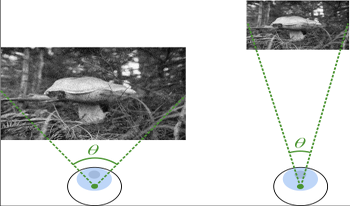
Assessing the quality of images often requires accounting for the viewing conditions - viewing distance, display resolution, and size. For example, the visibility of compression distortions may differ substantially when a video is viewed on a smartphone from a short distance and when viewed on a TV from a large distance. Nonetheless, traditional metrics are limited when applied across a diverse range of users with a diverse range of viewing environments. Metrics that account for these viewing conditions typically rely on contrast sensitivity functions (CSFs). However, it is also possible to rescale the input images to account for the change in the viewing distance. In a recent study comparing these two types of metrics, we did not observe any statistical difference between the metrics. Hence, in this paper, we use Fourier analysis to study the similarities and differences between the mechanisms of CSF-based and rescaling-based metrics. We compare the behavior of each approach and investigate the correlation between their predictions across the viewing distances. Our findings demonstrate a similarity between the two approaches for high-frequency distortions when the viewing distance is increased (the images are downscaled), but not when the viewing distance is decreased (the images are upscaled) or when accounting for low-frequency distortions.
Dounia Hammou, Lukáš Krasula, Christos G. Bampis, Zhi Li, Rafał K. Mantiuk, "Image Quality Assessment Across Viewing Distances: A Comparison Study of CSF-Based and Rescaling-Based Metrics" in Electronic Imaging, 2024, pp 225-1 - 225-7, https://doi.org/10.2352/EI.2024.36.11.HVEI-225
 Find this author on Google Scholar
Find this author on Google Scholar Find this author on PubMed
Find this author on PubMed